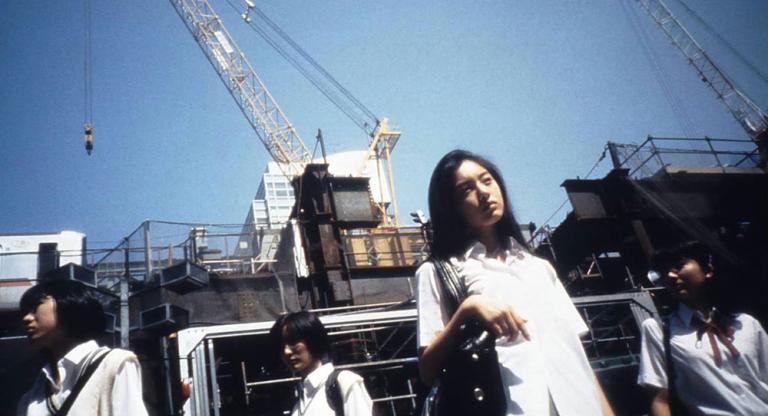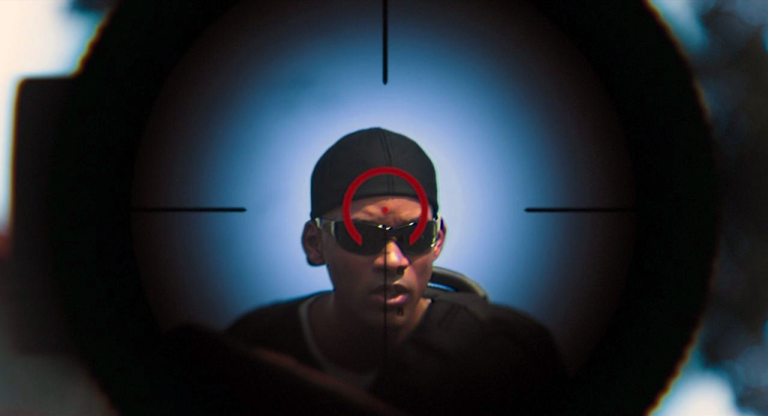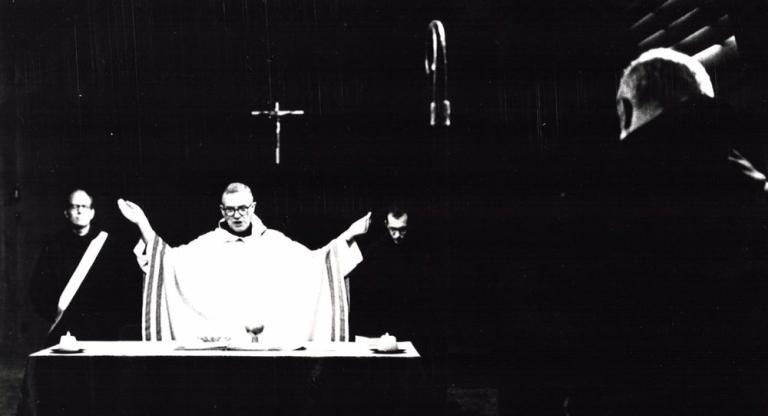Tonight Screen Slate and Kilroy Metal Ceiling present a free 16mm rooftop screening of Sarah Maldoror's Sambizanga , (1972), a landmark of militant Third World liberation cinema, and likely the first feature film directed by a woman in Sub-Saharan Africa. Although this unequivocal masterpiece is rarely screened and has never been released on any home video format, we're able to present it thanks to the filmmaker and the New York Public Library.
Sambizanga is based on a novel by Portuguese-Angolan author and activist Luandino Vieira. Viera finished the book mere days before his incarceration in the wake of assaults on prisons and police stations by the Popular Movement for the Liberation of Angola (MPLA) in the capital city Luanda in February 1961, the moment at which centuries of occupation erupted into a guerilla war for independence. Set in the weeks precipitating these events, Sambizanga is a riveting neorealist dramatization of the struggle. It's pitched against the personal story of a woman who, with her child in tow, searches high and low for her husband, who has been arrested, beaten, and imprisoned by the Portuguese secret police as a suspected member of the MPLA. Increasingly hardened and determined, she navigates a web of colonial bureaucracy, military occupation, racism, sexism, class hierarchy, and underground resistance amid a climate of revolutionary ferment to find her man.
The film's singularly urgent veracity is inspired by Maldoror's unique background: born Sarah Ducas in Guadeloupe, Maldoror's early work in theater led her to Moscow to study film with Ousmane Sembène and eventually to Angola, where she married the Angolan poet and MPLA co-founder and inaugural president Mário Coelho Pinto de Andrade. (de Andrade also created the French translation of Vieira's novel and co-authored the film script.) The film’s echoes of The Battle of Algiers are not coincidental: a few years earlier, Maldoror had worked as Gillo Pontecorvo’s assistant on the very same film. And yet the Italian aristocrat’s affinity for revolutionary struggle, relayed after-the-fact, can hardly match Maldoror’s own passionate and immediate response as an MPLA leader documenting the struggle from within, in media res. As a result, the film was shot in the Congo and was not publicly shown in Angola until the country’s emancipation two years later. Indeed, the film was not necessarily aimed at audiences in Angola, but rather to gain international support for the MPLA's cause. It is furthermore unique — and doubles down on the source material, to which it is highly faithful — in its portrayal of women as doubly oppressed by sexism and colonial occupation.
Mark Cousins recently wrote, “If some of the anticolonial Third Cinema films of the 70s feel preachy now, Maldoror’s does not.” Indeed, Maldoror has said herself, with assured dismissiveness, that the film was often criticized by those on the left for being too beautiful. That’s garbage. Few — if, frankly, any — films are so innately, integrally and consummately revolutionary. Once seen, never forgotten: as cinema and politics, Sambizanga is unimpeachable. Don’t miss it.


